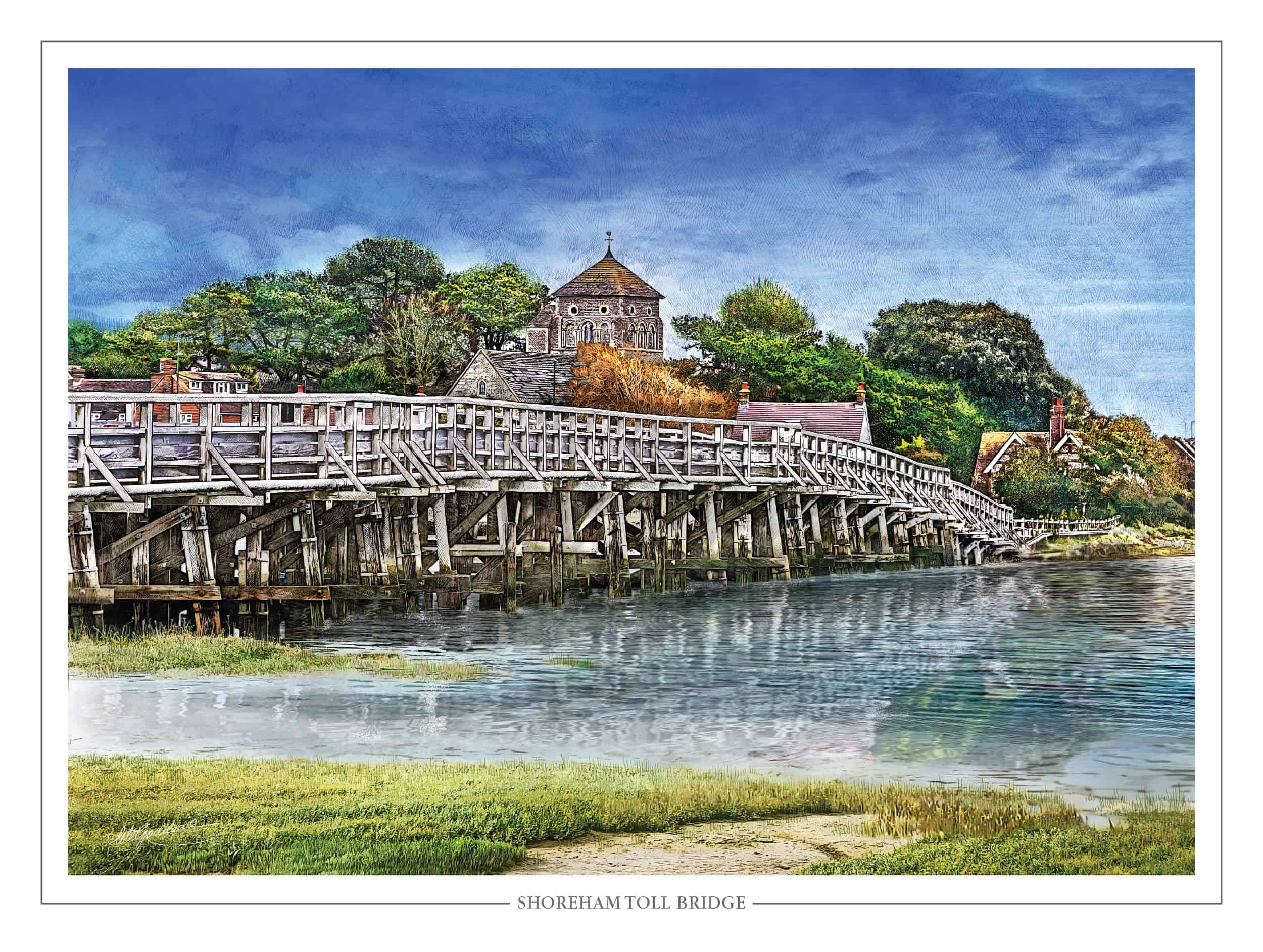Shoreham Toll Bridge
(Click on the images for a larger view)
Shoreham Tollbridge is a bridge crossing the River Adur in West Sussex, England. It is the last of its kind in Sussex and one of the last of its kind anywhere in the world
Before the building of the bridge in 1781, the Adur presented the one major obstacle to east-west communication along the coastal plain of Southern England. The choices open to the traveller wishing to cross the Adur were to travel miles out of the way and use the bridge at Bramber, to ford the river on horseback or to use the ferry that was operating at that time on the site of what is now the bridge. Whilst little is known about the operation of the ferry it must have been a daunting prospect as it was later described as ‘dangerous and frequently impassable’ in the Act of Parliament authorising the construction of the bridge.
The bridge was completely rebuilt during the First World War retaining the original eighteenth century design. The bridge carried the coastal trunk road – the A27 road – until 1970 when its successor was built a quarter mile to the north. At the time the bridge closed it was the last public road bridge in Sussex to be controlled by a toll. The bridge has since been classified as a Grade II listed building and is preserved as a building of historic interest.
In 2008 the bridge underwent a major refurbishment with the aim of extending its life for a further 30 years. The bridge has now been designated a bridleway and is a popular local landmark used by both leisure and commuter traffic on foot, bicycle and horseback.
In the background is St Nicolas Church, Shoreham-by-Sea, listed as Grade 1 by English Heritage. Some Saxon-era structural elements remain despite 12th-century additions made when Shoreham became prosperous, and further extension in the 14th century and a Victorian restoration.



